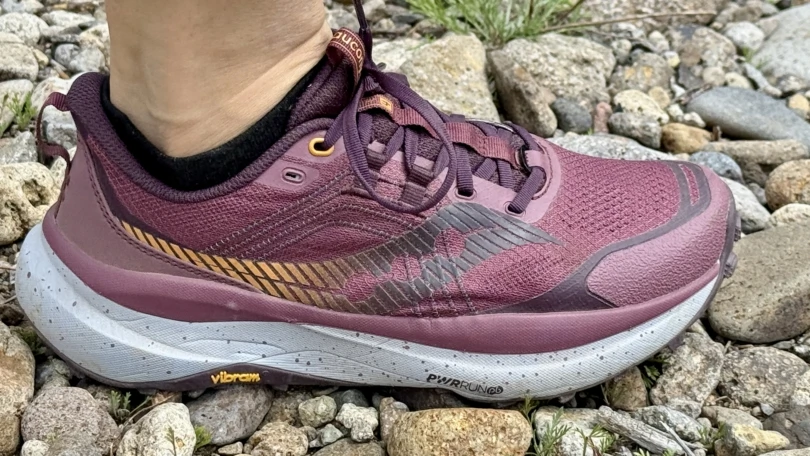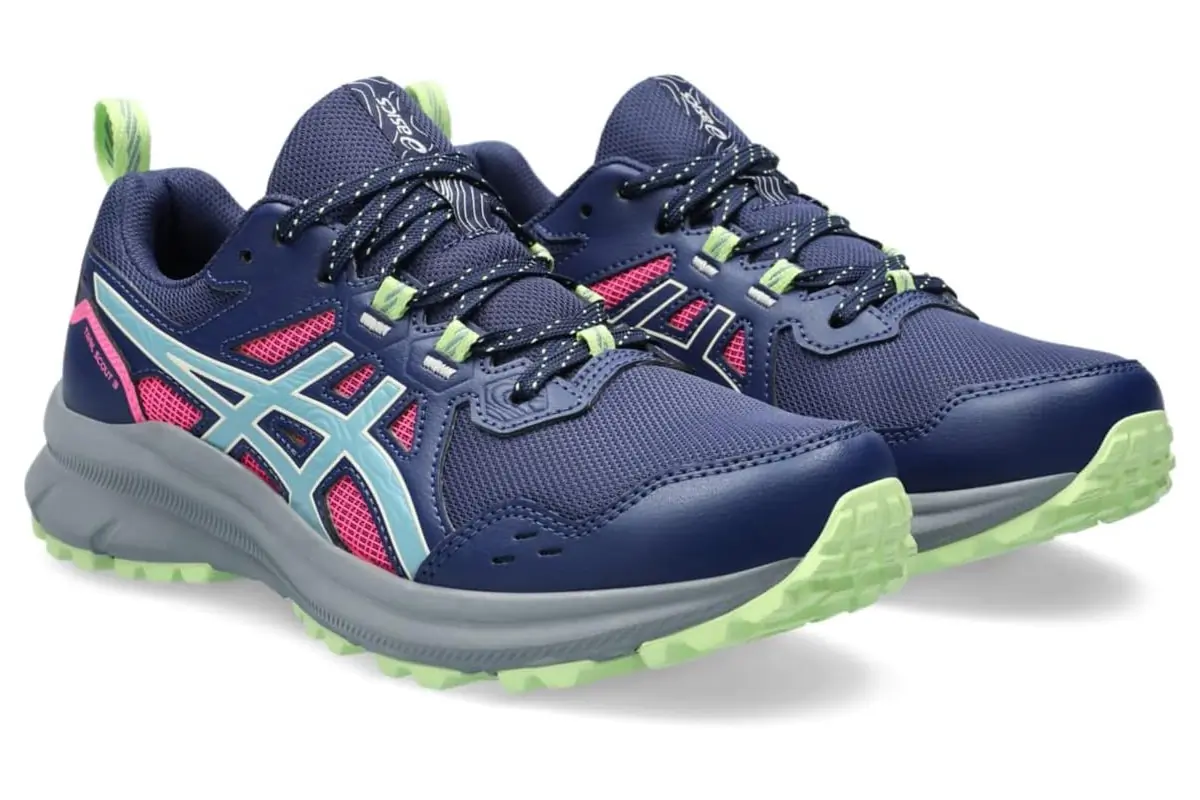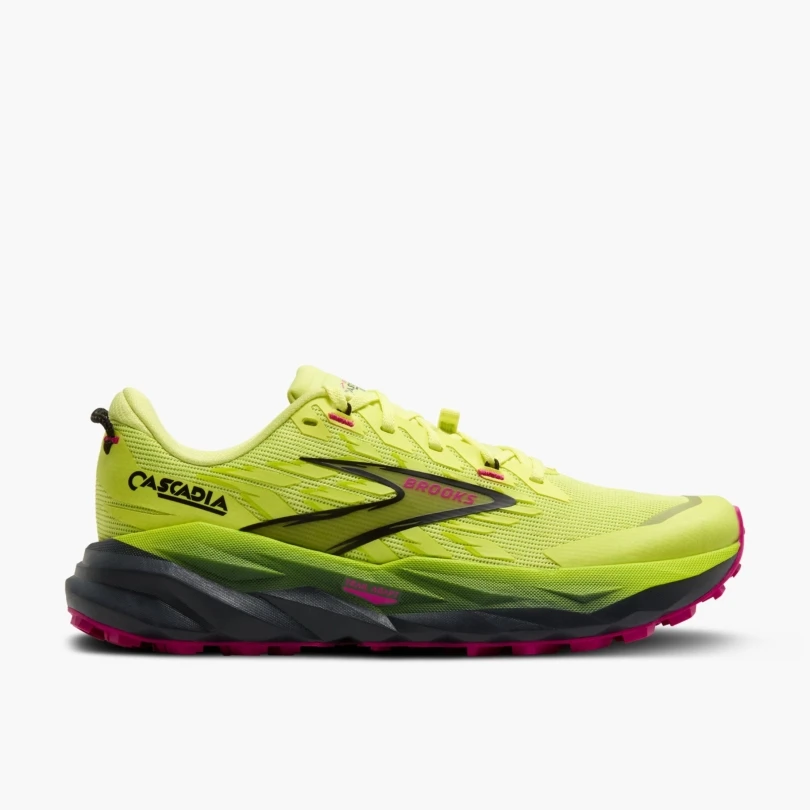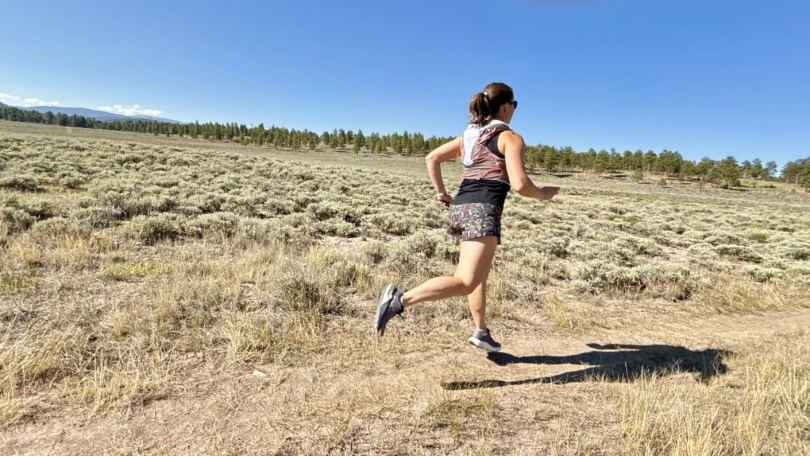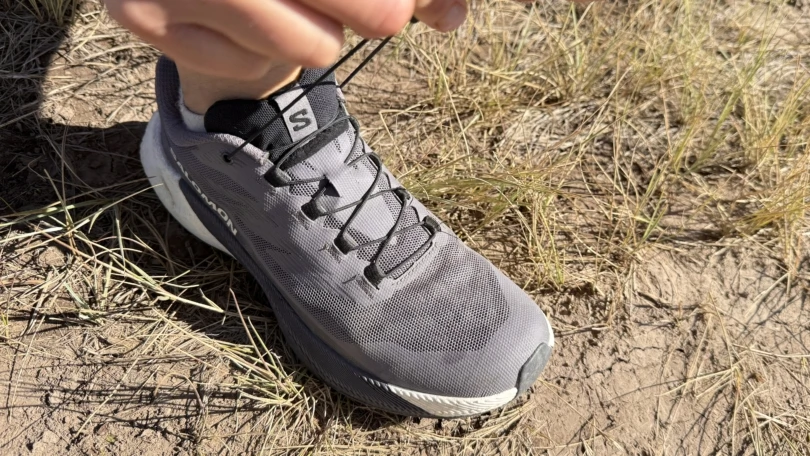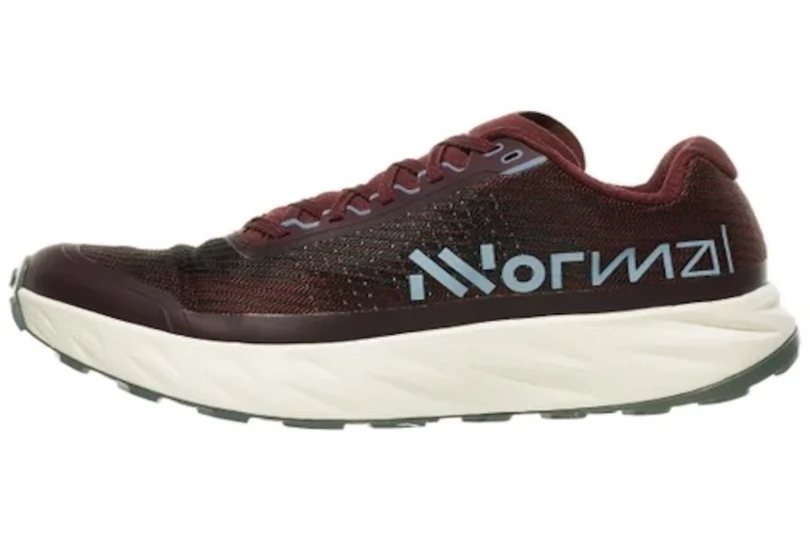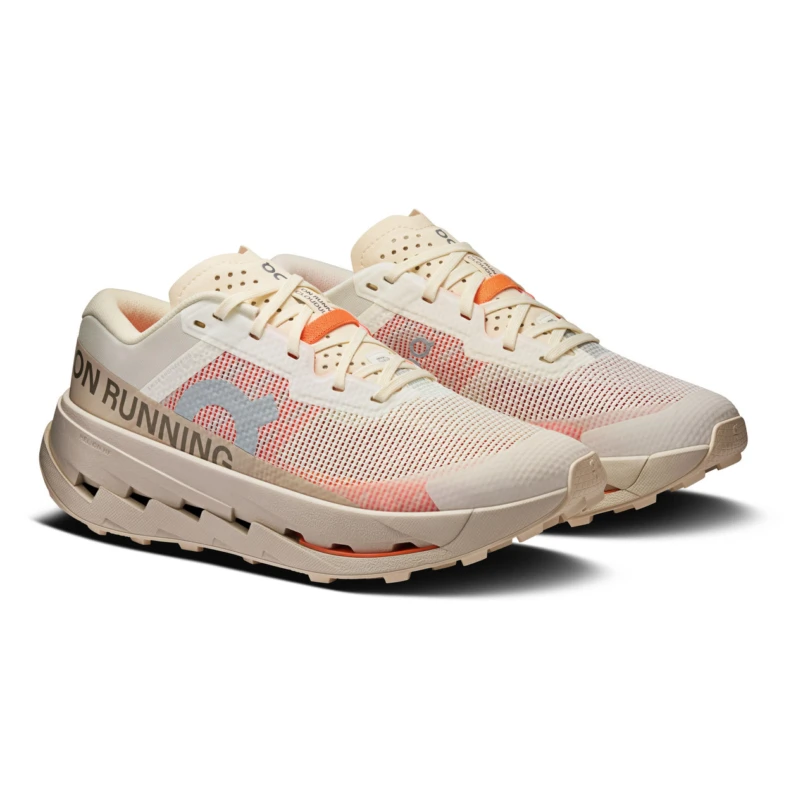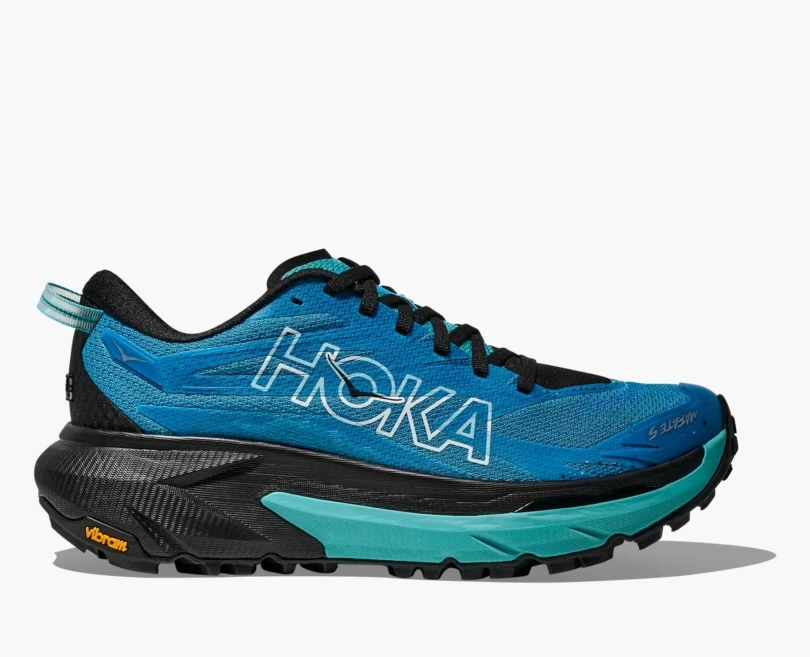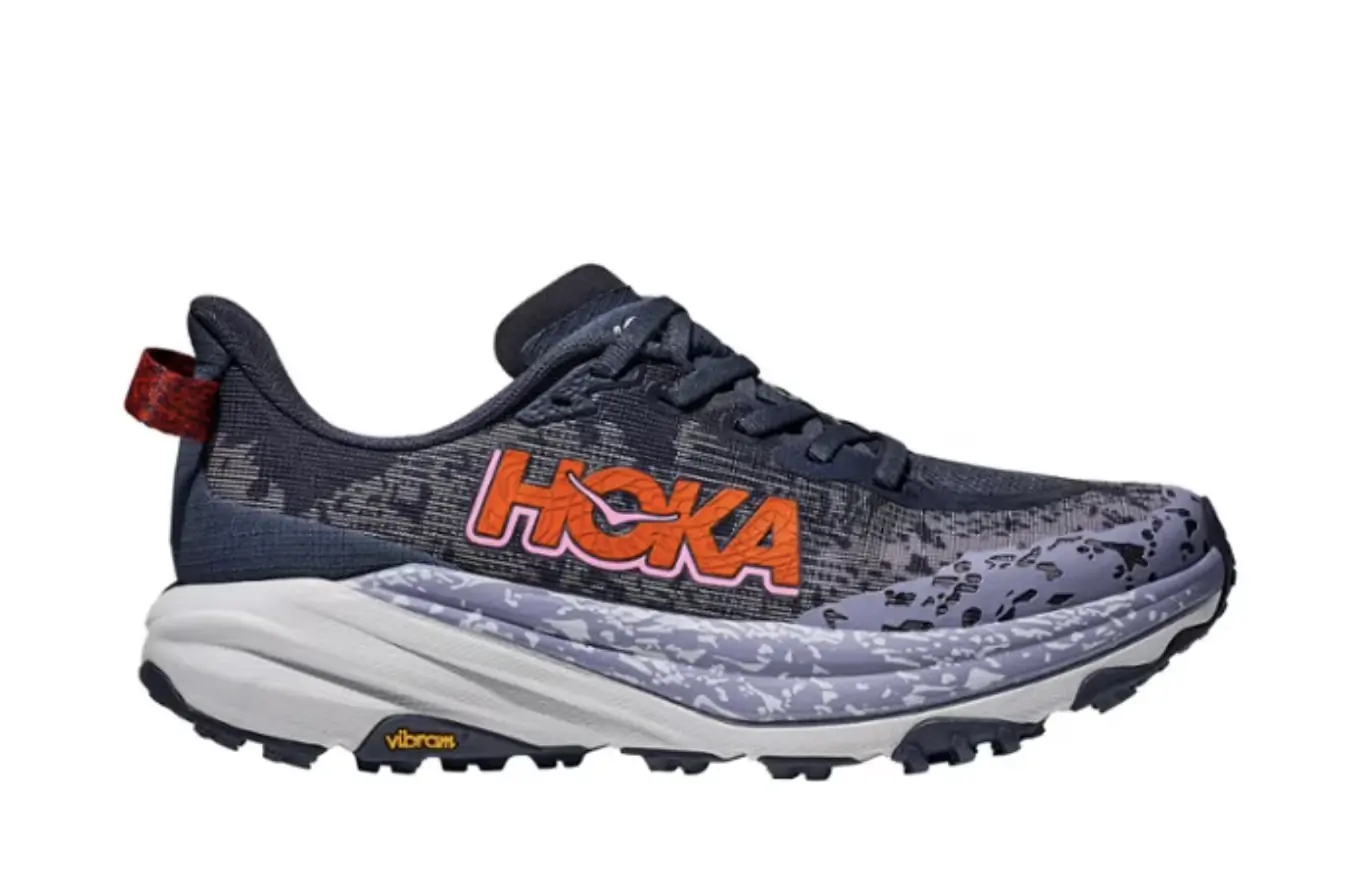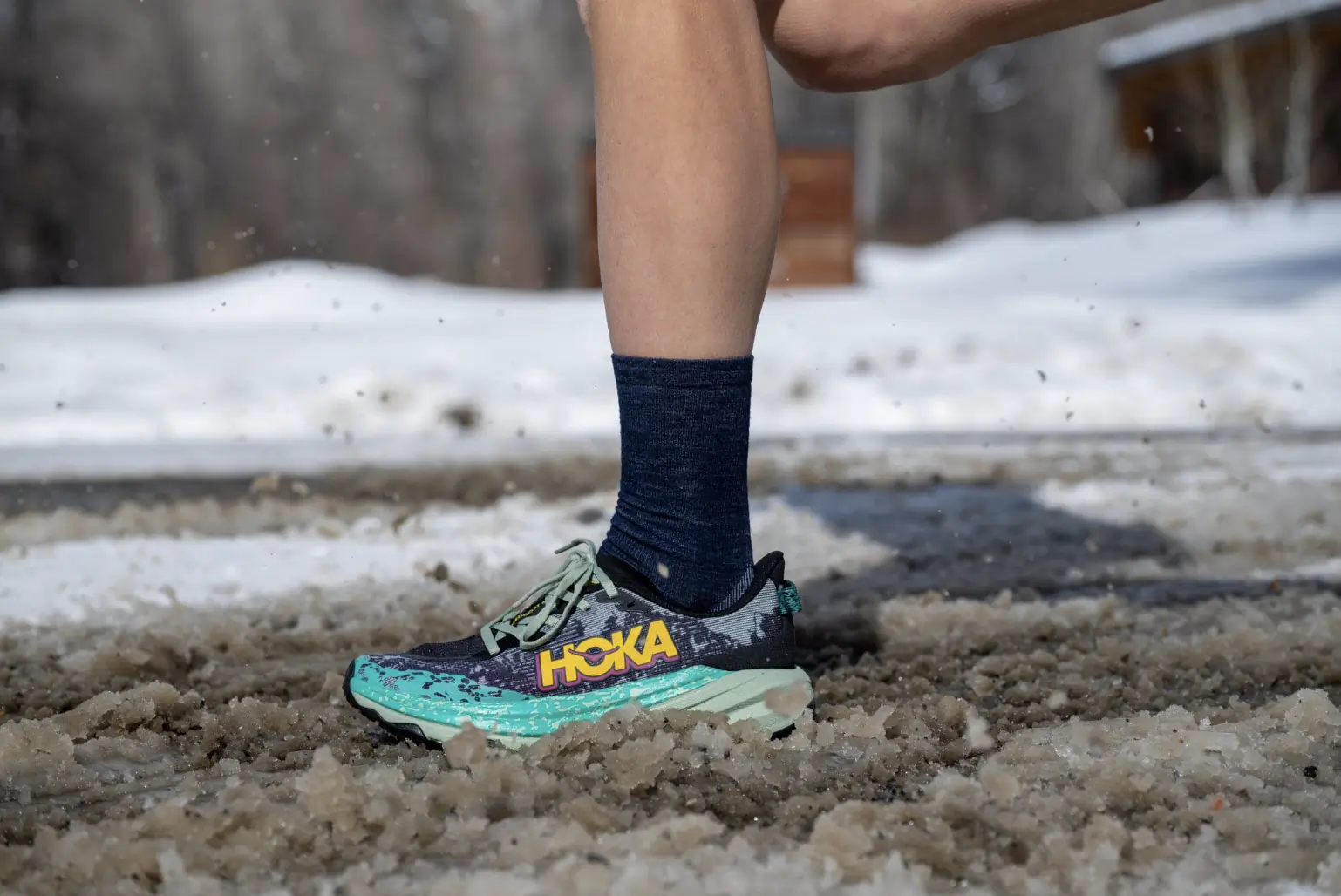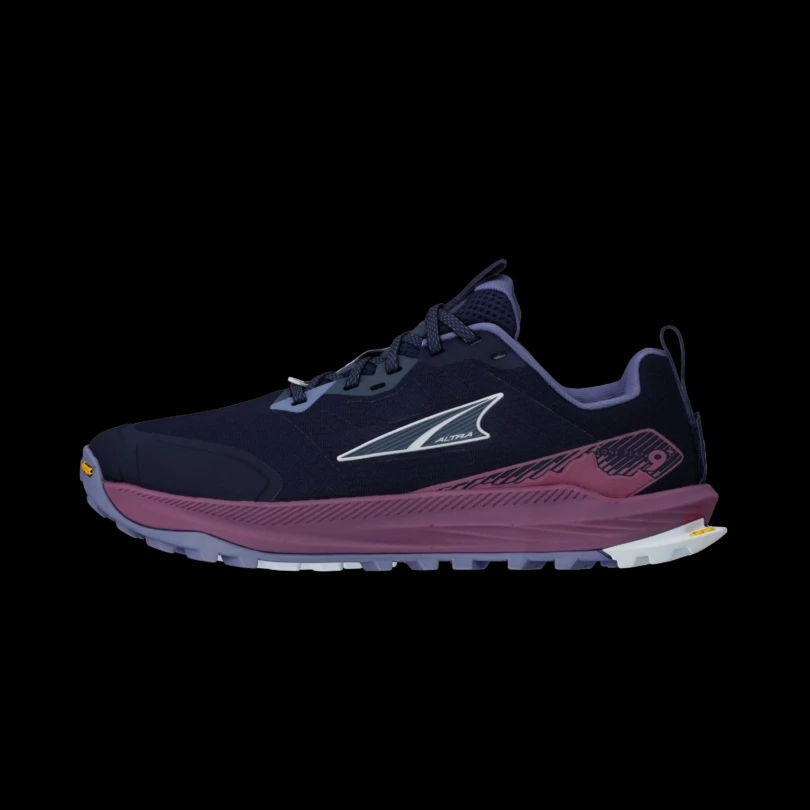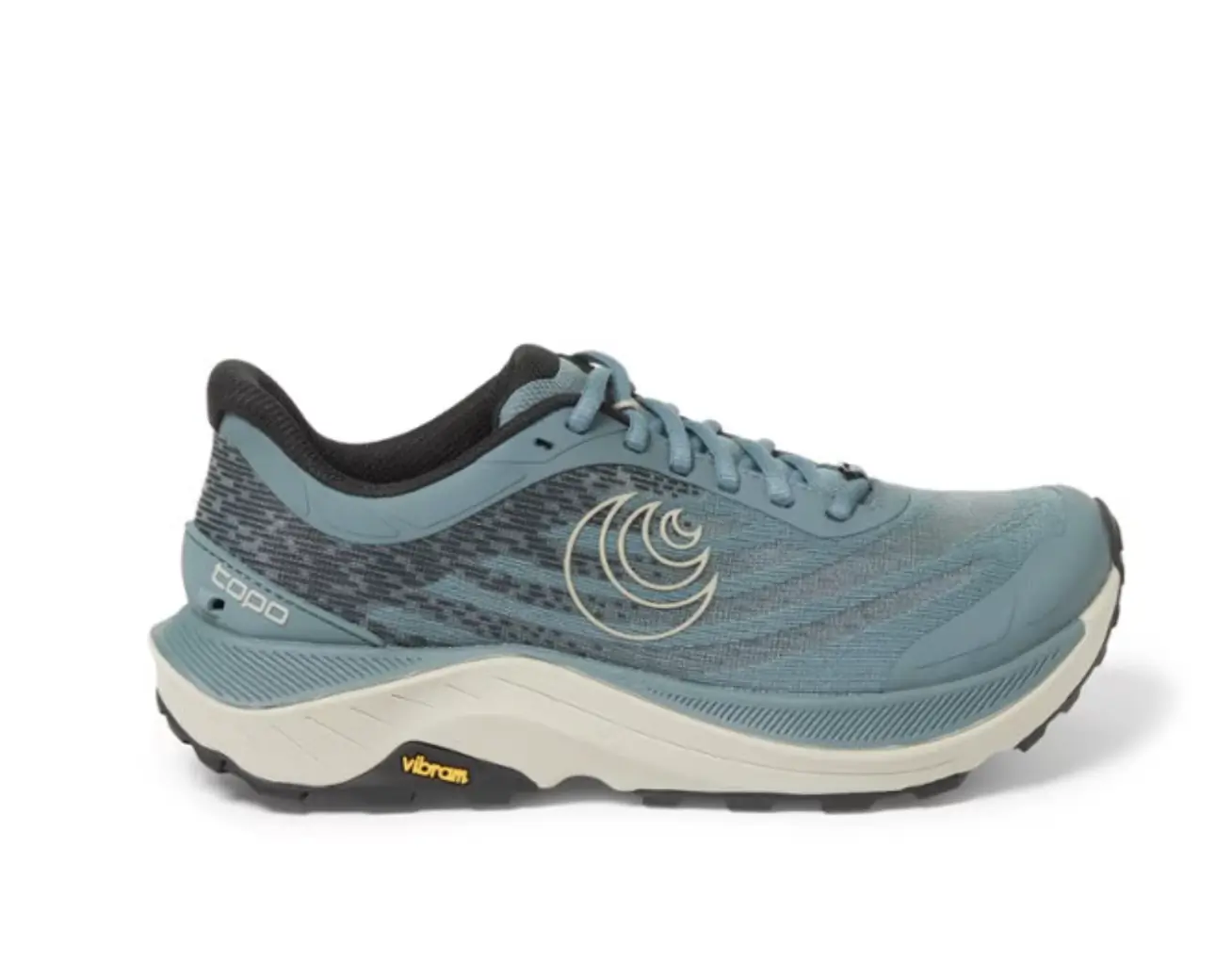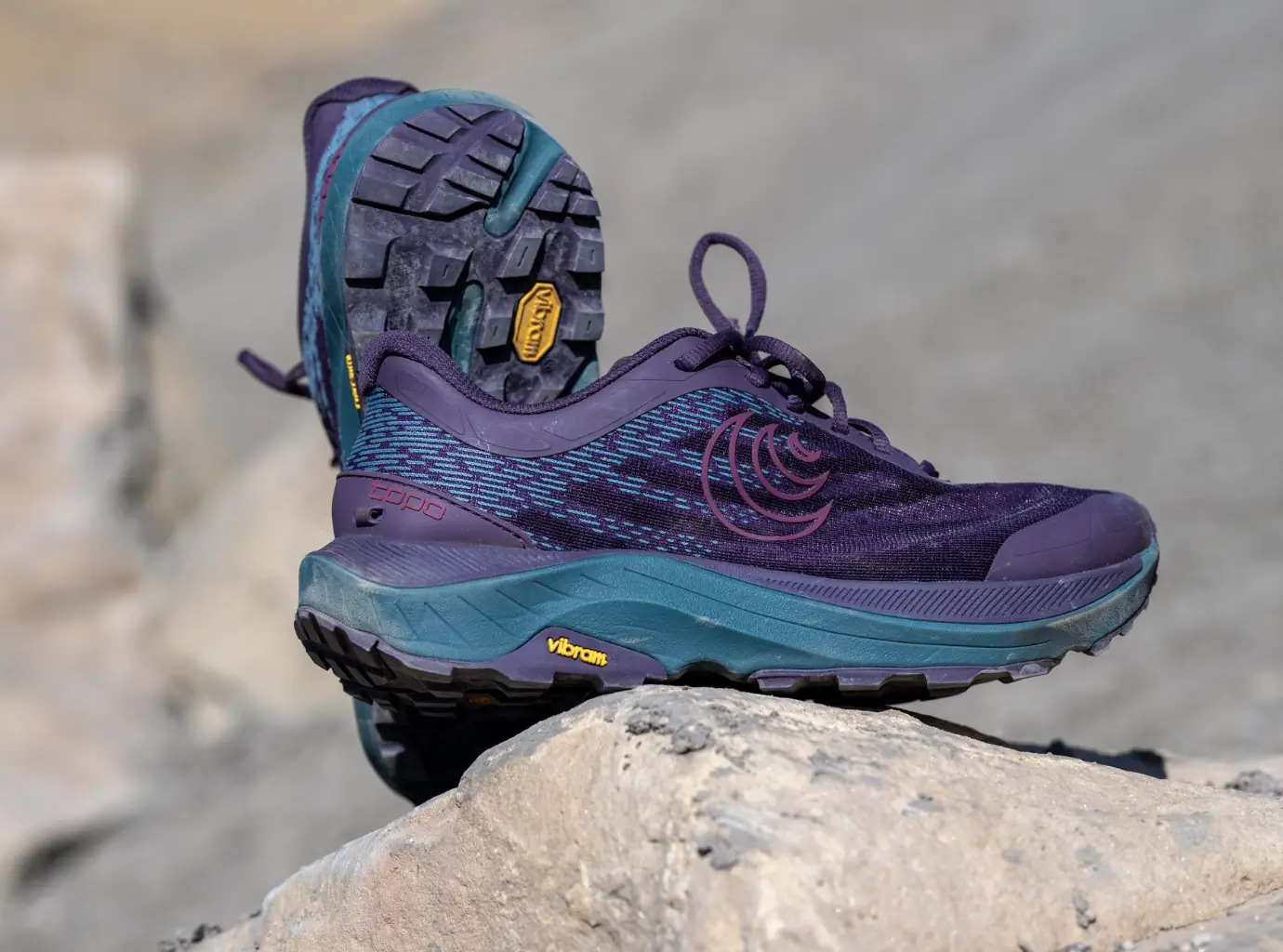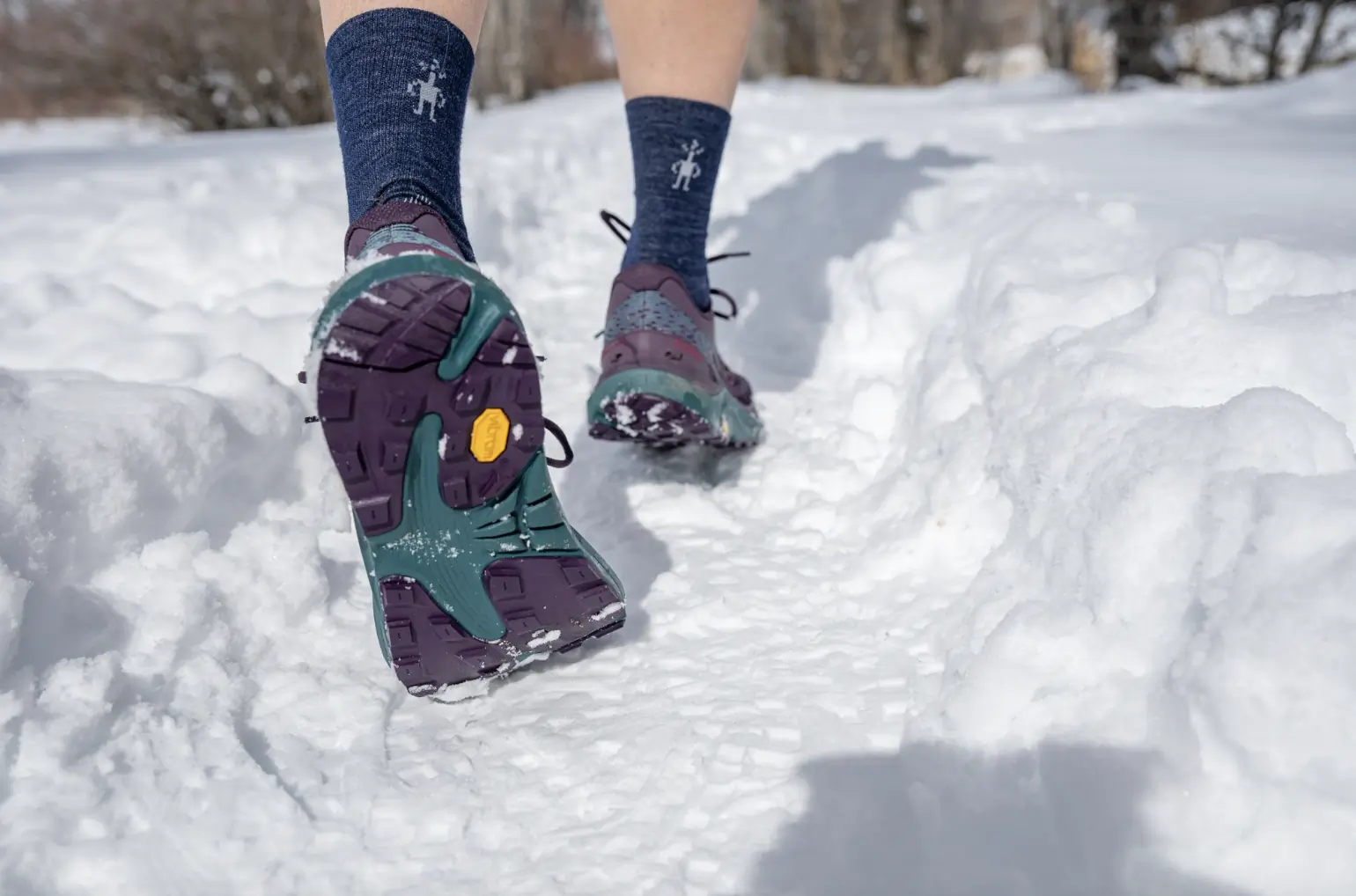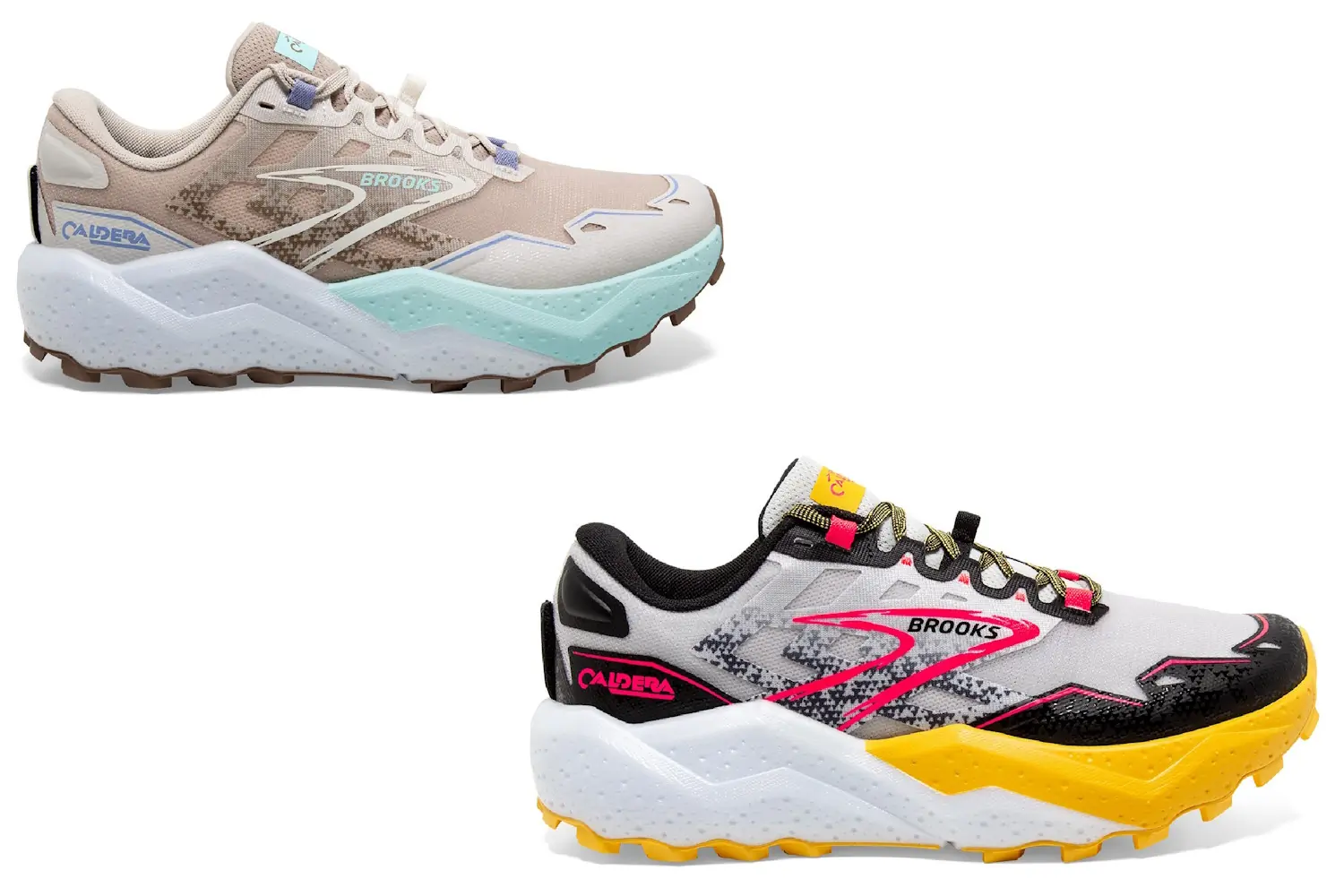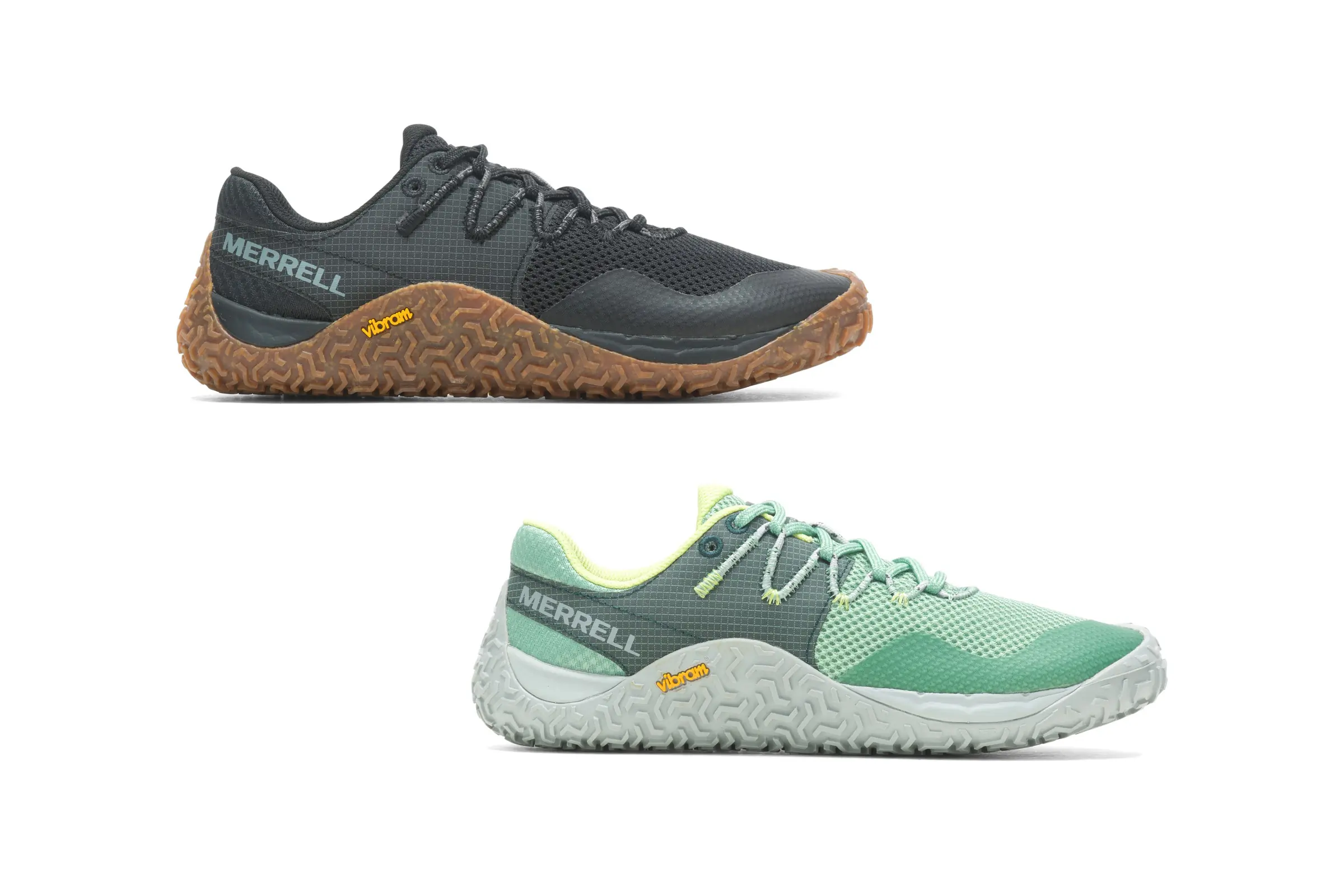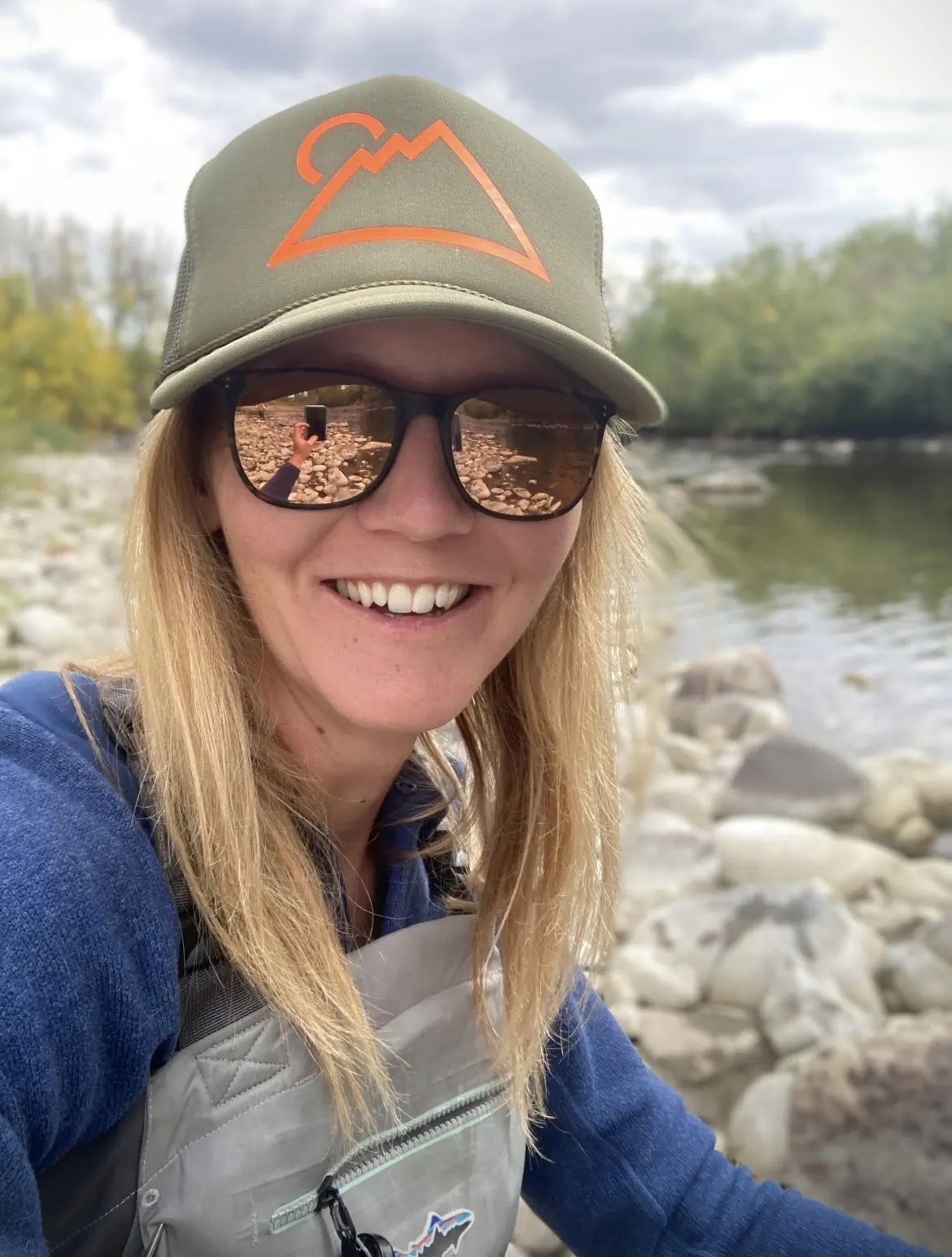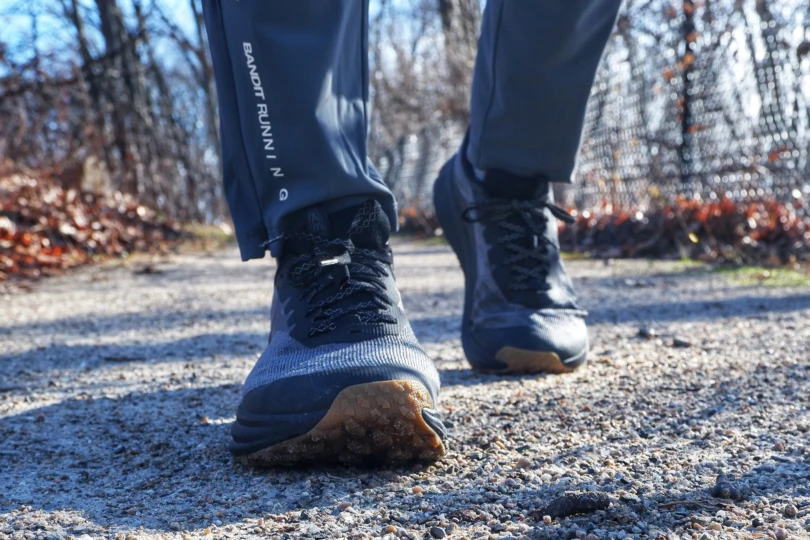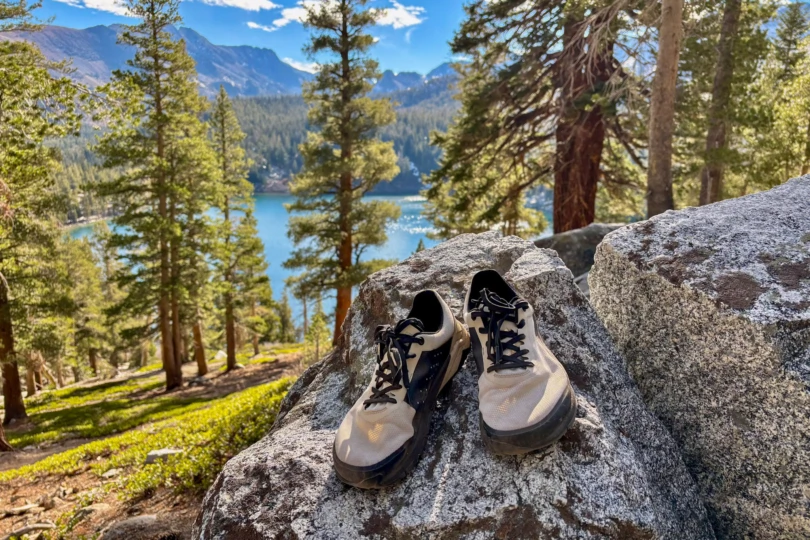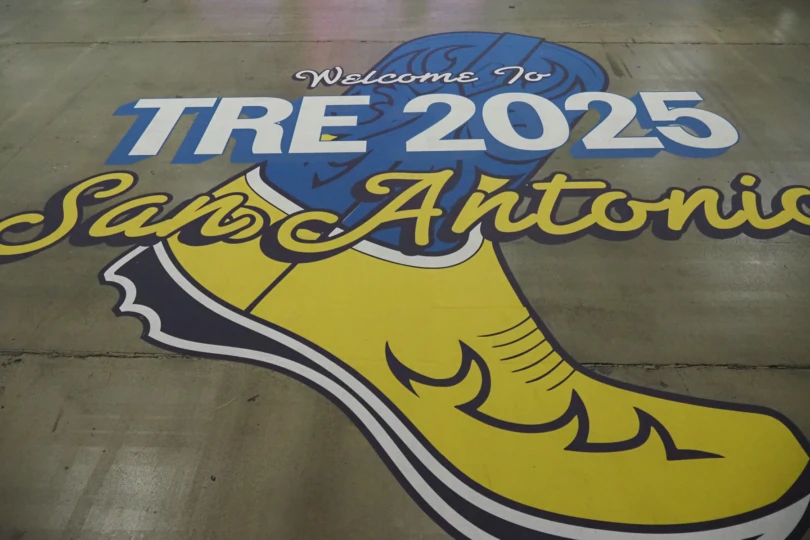Trail running shoes for women are a specific tool built to handle dirt, rocks, mud, and everything in between. A good pair can mean the difference between floating over technical terrain and slip-sliding your way back to the trailhead.
But, it has also become an exceedingly crowded category over the years. What was once an under-the-radar niche has now boomed into its own categorical giant. If you want a trail running shoe that can handle everything from daily runs to long hikes, the Saucony Xodus Ultra 4 has your number. If you’re the sort who wants to go ultrafast and ultralight, consider the Nnormal Kjerag 2.0. Regardless, trail running shoes now boast the latest tech, the lightest weight, and the most comfort we’ve ever seen.
To make your choice easier, a handful of testers and I ran the latest and greatest, so you don’t have to. The majority of testing happened in the Rockies outside of Aspen, Colorado with some adventured mixed throughout the San Juan Range and the hot-and-dry desert of southern Utah. We looked at factors like traction, cushion, stability, fit, and durability before selecting the very best options of 2025.
Editor’s note: For our September 12, 2025, update, we added the Saucony Xodus Ultra 4, Salomon Pulsar, Nnormal Kjerag 2.0, On Cloudultra 3, Hoka Mafate 5, Brooks Cascadia 19, Salomon Genesis, and the Altra Lone Peak 9+.
The Best Women’s Trail Running Shoes of 2025
Saucony Xodus Ultra 4 Women’s
- Weight: 19.8 oz. (per pair)
- Drop: 6 mm (36/30 mm)
- Upper material: Engineered mesh
- Best for: Daily runs, long runs, or long hikes
Pros
- Do-it-all workhorse; tons of versatility
- Bomber traction with the Vibram Megagrip outsole
- Ample cushioning but still responsive
Cons
- Heavy
- Less breathable in warmer weather
Asics Trail Scout 3
-
Traction
7.0
-
Waterproofing and Weather Resistance
6.0
-
Warmth
5.5
-
Fit and Cushioning
8.8
- Weight (per pair): 18 oz.
- Drop: 10 mm
- Upper material: Abrasion-resistant mesh
- Best for: Town-trail shoes, hiking
Pros
- Affordable
- Great heel lockdown
- Vegan
- Road to trail transition
Cons
- Heavy
- Stiff
Brooks Cascadia 19 Women’s
- Weight: 19.6 oz (per pair)
- Drop: 6 mm
- Upper material: Mesh upper with 3d overlays
- Best for: daily miles, hiking and backpacking
Pros
- Lighter than its predecessors
- Proprietary TrailTack Green rubber rivals Vibram
- Arguably the most comfortable upper we tested
Cons
- Tongue is too padded
Salomon Pulsar – Women’s
- Weight: 16.8 oz. (per pair)
- Drop: 6 mm (29/23 mm)
- Upper material: Engineered mesh with protective overlays
- Best for: Road-to-trail, mixed terrain, shorter distances
Pros
- Secure, responsive fit
- Reasonable price
- Versatile use for a variety of runners
- Decent ground feel
Cons
- Contragrip rubber isn't as grippy as Vibram
- Quicklace storage pocket is hard to use
Nnormal Kjerag 2.0
- Weight: 16.2 oz. (per pair)
- Drop: 6 mm (26/20 mm)
- Upper material: High-tenacity nylon blended with Kevlar
- Best for: Fast trail running, technical trail running
Pros
- Lightweight yet durable
- Grippy and durable traction
- Quite agile with plenty of ground feel
Cons
- Minimal cushioning
- No insole
On Cloudultra 3 Women’s
- Weight: 16.6 oz (per pair)
- Drop: 6 mm (32/26.5 mm)
- Upper material: Engineered mesh
- Best for: Long distance and ultra training
Pros
- Wide platform is very stable
- Rocker profile helps you move efficiently
- Improved traction from previous iterations
Cons
- A touch narrow in the midfoot
- Helion HF midsole requires a break-in period
Hoka Mafate 5 Women’s
- Weight: 16.2 oz (per pair)
- Drop: 8 mm (44/36 mm)
- Upper material: Knit upper
- Best for: Long distances and technical terrain
Pros
- Very protective on rough terrain
- Grippy Megagrip traction with 5 mm lugs
- More responsive than expected
Cons
- Roomy fit can feel sloppy until laced properly
- Max cushioning leads to reduced ground feel
Honorable Mentions: Women’s Trail Running Shoes
- Weight (per pair): 16.4 oz.
- Drop: 5 mm (38/33 mm)
- Upper material: Recycled engineered mesh
- Best for: Regular runs, trail races, and dry technical scrambles
Pros
- Offers wide sizes
- Highly cushioned for comfort
- Great at draining water
- Vegan
Cons
- Some of our testers don’t like the new, less stretchy upper
- Weight: 17.6 oz (per pair)
- Drop: 8 mm
- Upper material: A woven blend of synthetic and Kevlar fibers
- Best for: Daily runs and long slogs on mixed and rocky terrain
Pros
- Killer durability with the Kevlar in the upper
- Truly comfortable on most feet, no matter the distance
- Plenty of protection on burly terrain
Cons
- Limited ground feel with the higher stack height
- Weight: 18.6 oz (per pair)
- Drop: 0 mm (25 mm at heel and forefoot)
- Upper material: Recycled ripstop mesh
- Best for: Mid-long distance trail runs, hikes, thru hikes
Pros
- Altra continues their trademark roomy toe box
- Improved traction with Vibram Megagrip rubber
- Durable workhorse that can withstand high mileage
Cons
- Noticeably heavier than the Lone Peak 8
- Much pricier than the Lone Peak 9
- Weight (per pair): 16.6 oz.
- Drop: 5 mm (35/30 mm)
- Upper material: Recycled mesh
- Best for: Trail running, hiking
Pros
- Great for those who prefer wide toebox
- Maximum cushioning
Cons
- Lightweight
- Gaiter compatible
- Weight (per pair): 18.8 oz.
- Drop: 6 mm (26/20 mm)
- Upper material: Air Mesh
- Best for: Runners who want maximum cushion and comfort
Pros
- Aggressive lugs
- Incredibly comfortable
- Outstanding cushion
- Lace keepers
Cons
- Heavy
- Weight (per pair): 14.46 oz.
- Drop: Zero
- Upper material: 100% recycled breathable mesh
- Best for: Runners who want an affordable, bare-minimum shoe
Pros
- Affordable price
- Incredibly lightweight
- Keeps feet in a natural gait
- Barely-there feel
Cons
- Not ideal for rugged terrain
- Fits narrow
Women’s Trail Running Shoes Comparison Chart
| Trail Running Shoe | Price | Weight (Per Pair) | Drop | Upper Material |
|---|---|---|---|---|
| Saucony Xodus Ultra 4 | $170 | 19.8 oz. | 6 mm (36/30 mm) | Engineered mesh |
| Asics Trail Scout 3 | $60 | 19.4 oz. | 9.4 mm | Abrasion-resistant mesh |
| Brooks Cascadia 19 | $150 | 19.6 oz. | 6 mm | Mesh upper with 3D overlays |
| Salomon Pulsar | $140 | 17.2 oz. | 6 mm | Engineered mesh |
| Nnormal Kjerag 2.0 | $195 | 16.2 oz. | 6 mm (26/20 mm) | Nylon blended with Kevlar |
| On Cloudultra 3 | $190 | 16.6 oz. | 6 mm (32/26.5 mm) | Engineered mesh |
| Hoka Mafate 5 | $185 | 16.2 oz. | 8 mm (44/36 mm) | Knit upper |
| Hoka Speedgoat 6 | $155 | 16.4 oz. | 5 mm (38/33 mm) | Recycled engineered mesh |
| Salomon Genesis | $150 | 17.6 oz. | 8 mm | Woven synthetic and Kevlar fibers |
| Altra Lone Peak 9+ | $155 | 18.6 oz. | 0 mm (25/25 mm) | Recycled ripstop mesh |
| Topo Athletic Ultraventure 4 | $150 | 16.6 oz. | 5 mm (35/30 mm) | Recycled mesh |
| Brooks Caldera 7 | $150 | 18.08 oz. | 6 mm (26/20 mm) | Synthetic air mesh |
| Merrell Trail Glove 7 | $120 | 14.46 oz. | Zero | 100% recycled breathable mesh |
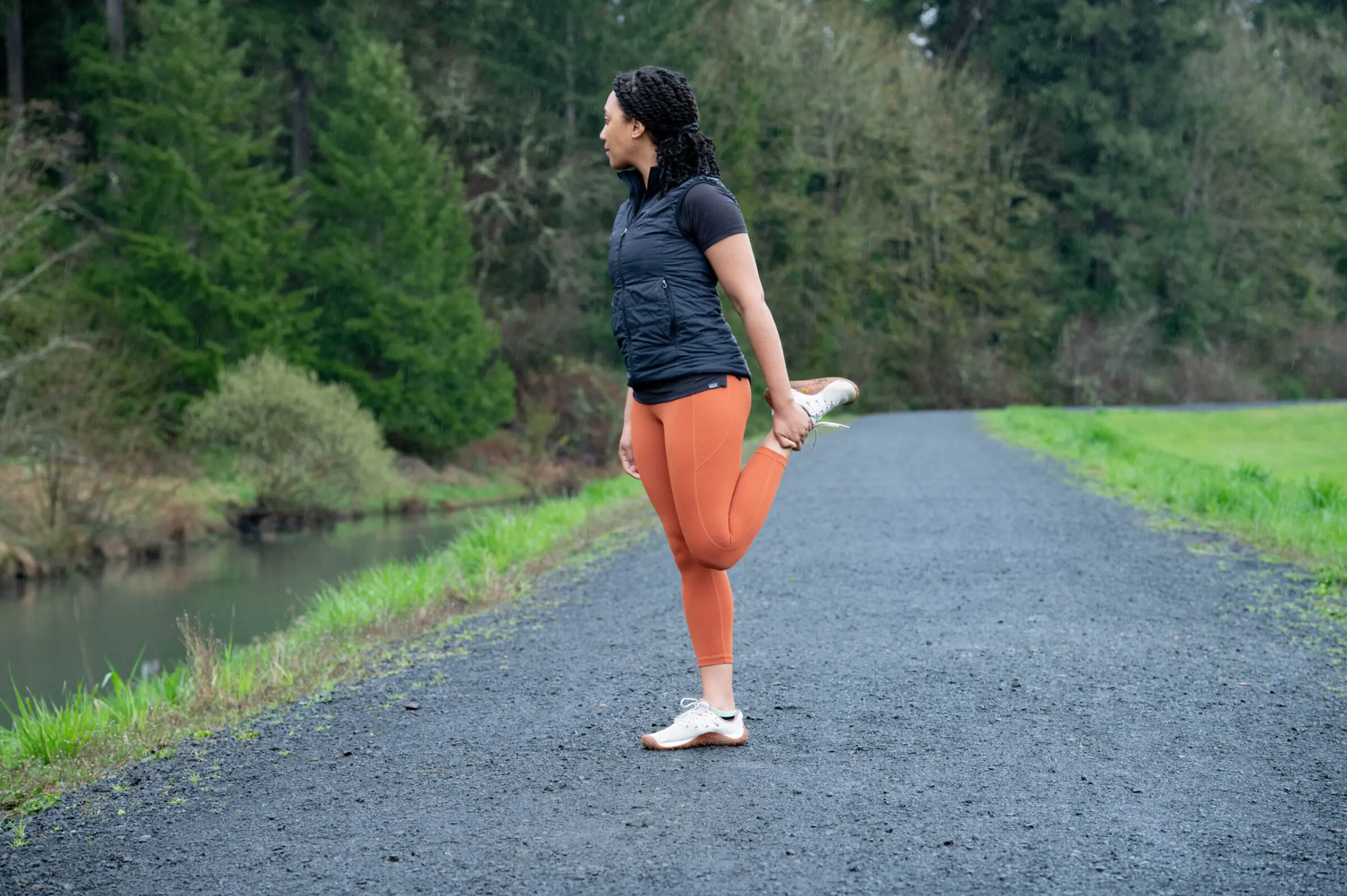
How We Tested Women’s Trail Running Shoes
Our Expert Testers
Athletes from GearJunkie have accumulated decades of experience in outdoor running, casual running, marathons, and ultramarathons. We combine our years of experience and education to provide advice on all running-related gear.
Lead author Heather Balogh Rochfort is a former ultrarunner who currently enjoys lower mileage in the high country. Whether it’s picturesque singletrack, rugged ridgelines, or gritty sandstone, Balogh Rochfort loves to explore our public lands on foot, especially near her home outside of Aspen, Colorado.
Constance Mahoney has been a GearJunkie contributor since 2019. She is an experienced runner who has completed distances from local 5Ks to trail ultramarathons. In 2021, she founded and continues to lead the Trail Sisters Crested Butte, Colo., chapter.
Our Testing Process
To test these women’s trail shoes, we ran on a range of trails from buttery singletrack to rocky technical peaks and wet, muddy surfaces. During these runs, we paid careful attention to comfort, stability, outsole traction and grip, and durability. Our team tested each pair on long runs, tempo runs, and hill sprints. We inspected the shoes after each run to see if there was any visual wear and tear.
Clearly, women’s trail running shoes are being updated each season, which can be frustrating when you finally find a shoe you love. That’s why we make sure to test the updates to see if they are worth the upgrade or if you should stick with the version you have and sit tight for the next round.
Buyer’s Guide: How to Choose a Trail Running Shoe
Knowing which shoe is the right one for you can be daunting. That is why we are demystifying the shoe selection process by providing you with useful tips to find the shoe that best meets your running needs.
This article focuses on the best women’s trail running shoes. In separate articles, we have also outlined the best women’s road running shoes and the best winter running shoes.
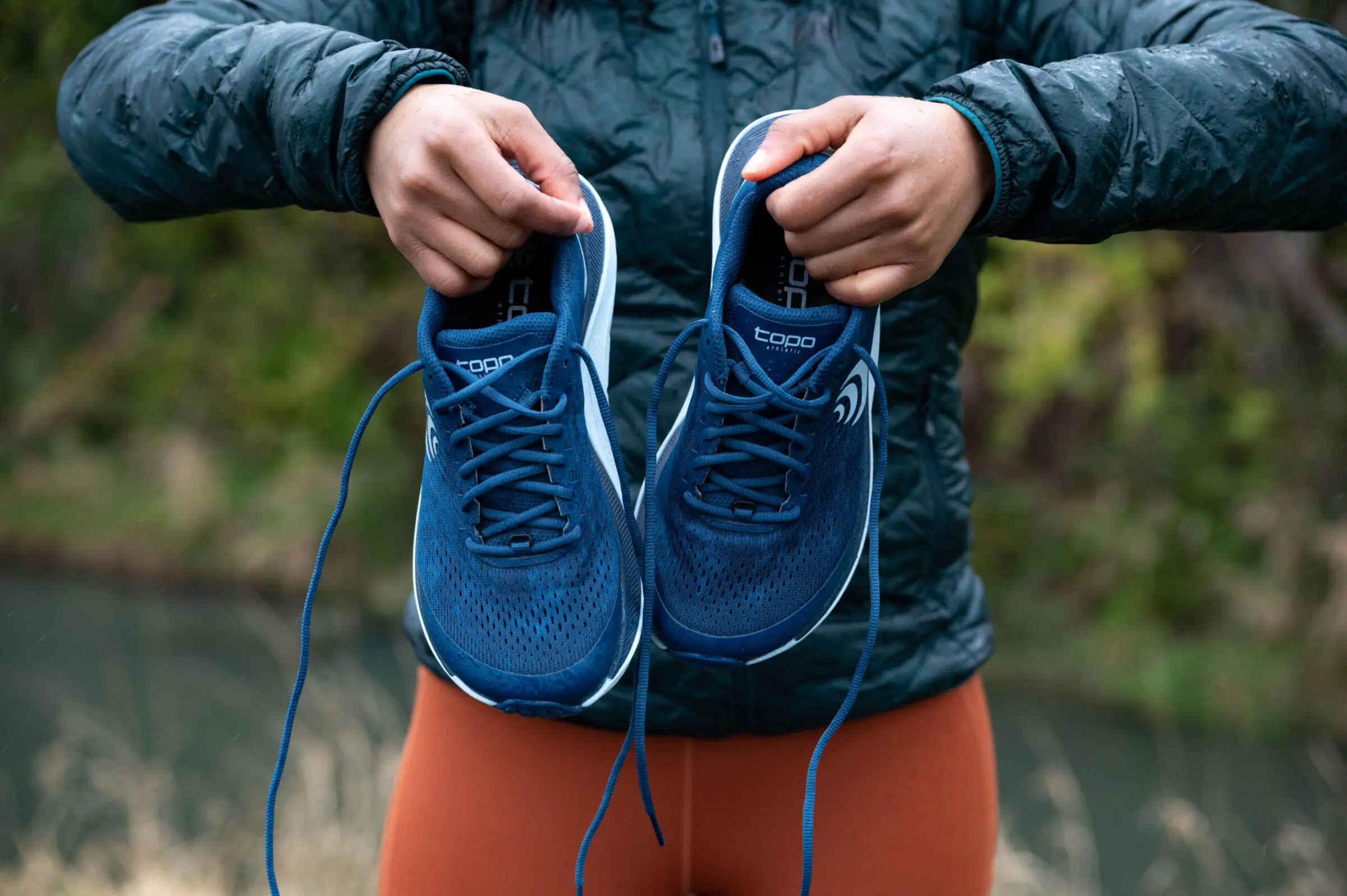



Where You Run Matters
There’s a lot to consider with running shoes, and where you plan on running matters. Do you plan on running on pavement? Or do you anticipate hitting the trails? Will the trails be all dirt or have a mixture of gravel? Your options will often consist of either a road or trail running shoe.
Road running shoes are designed for compact, smooth, and even surfaces. These shoes will have minimal features that make them lightweight and flexible with smooth soles. Keep in mind that these shoes may not be great for rocky, gravel, or uneven terrain.
Trail running shoes are for runners who want to deviate from the well-groomed paths and venture off-road. In order to do this, trail running shoes are made with deep lugs and traction patterns that can manage anything the environment may have in its way, including roots, boulders, stumps, and more. Trail running shoes may, though not always, have plates and stiffer midsoles in addition to offering support and protecting your feet from jagged rocks and sharp objects.
Identify Your Running Gait
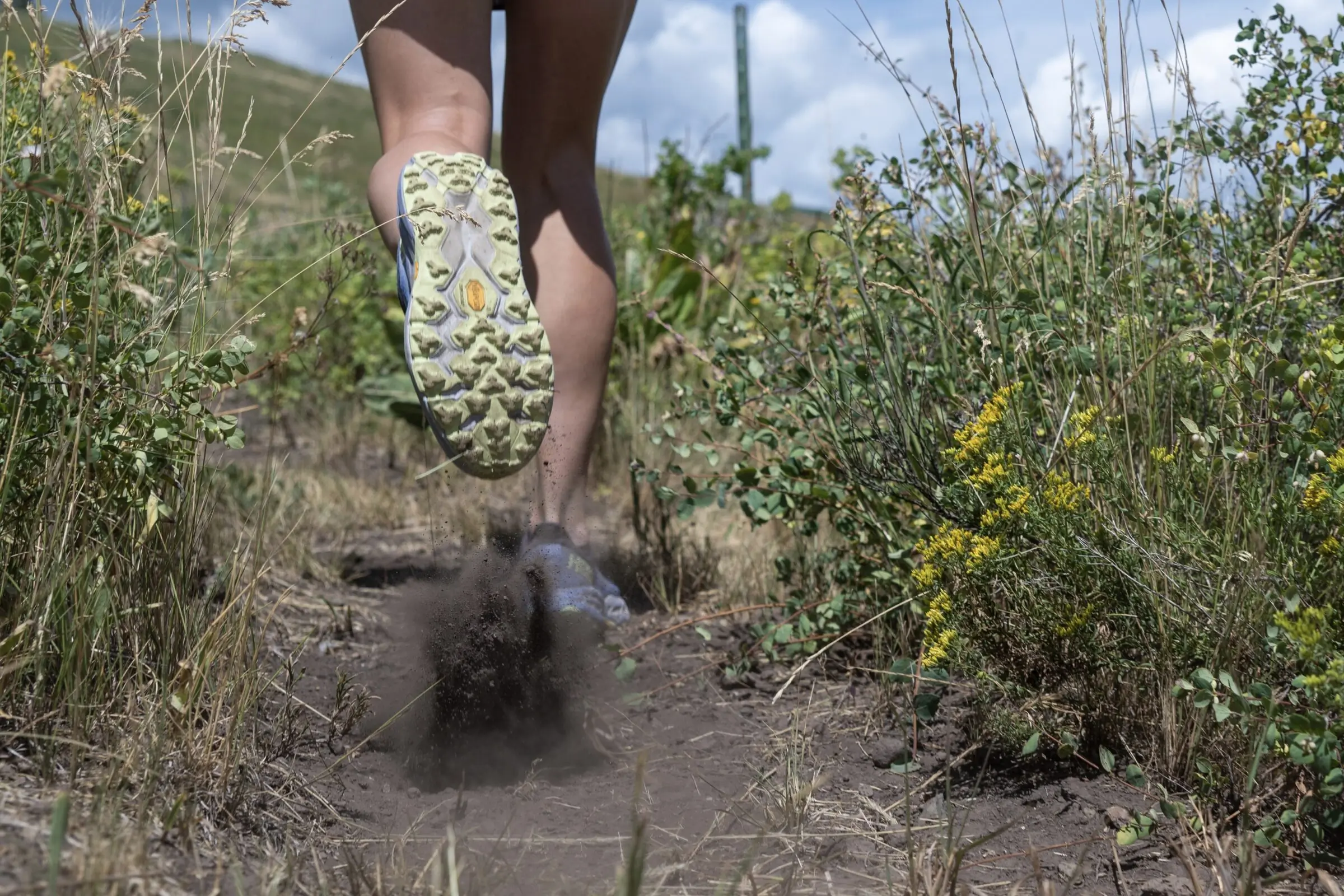



The term “pronation” refers to the way your foot rolls, which has an effect on your joints. Do you have an inward or outward foot roll? Knowing this will be helpful for you to decide what kind of assistance your running requires.
An easy way to identify your running gait is to examine the soles of your existing shoes and determine where they typically wear out. Or visit a foot expert to determine your type of pronation.
- Basic, or neutral, pronation is different for everyone, but ultimately, neutral pronation occurs when your foot naturally rolls slightly inward to distribute the body’s impact upon landing.
- Overpronation occurs when your foot rolls too far inward, which means your shoes will show signs of wear on the inside of them.
- Supination, or underpronation, occurs when your feet roll outward, resulting in the outer part of the heel striking the ground first, which will show signs of wear on the outermost edges.
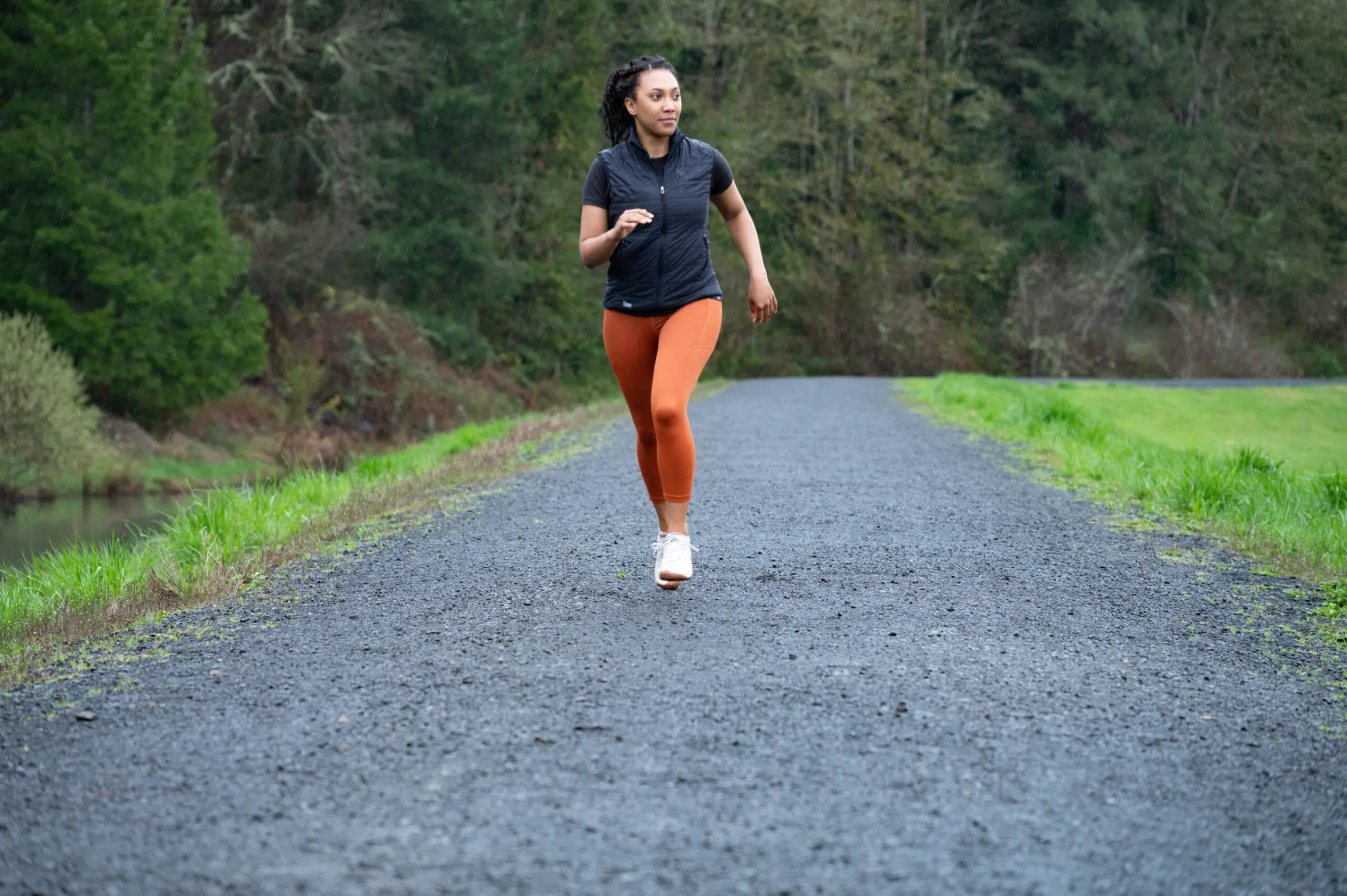



Stack and Heel-to-Toe Drop
Unless you’re running barefoot, every shoe has a stack. Measured in millimeters, the stack refers to how high the insole sits off the ground. Shoes with more cushion inherently have a higher stack. Furthermore, most shoes have a drop in stack height from the heel to the toe.
If you’re new to running, experts recommend a lower heel stack because it builds a wider range of motion and strength, which makes you a healthier runner.
Another factor to consider is the heel-to-toe drop, also known as the “drop,” measured in millimeters. A shoe’s drop is the difference in cushion height between the heel and the toe. If a shoe has a drop of 10 mm, it means the heel will be 10 mm higher than the toe.
Those who run on the balls of their feet should consider a zero-drop shoe like the Altra Lone Peak 9+ or the Merrell Trail Glove 7. Additionally, those who run heel-to-toe (heel strikers) should aim for a shoe with a larger drop, such as the Hoka Mafate 5 or Salomon Genesis, both of which has an 8 mm drop for optimal joint support.




Cushion
A shoe’s cushion is often made from EVA or polyurethane to help absorb the repetitive impact against hard surfaces. With increased cushioning, it becomes more impact-absorbing, which is advantageous for extended runs. However, the weight of the shoe will increase with the amount of cushioning.
How much cushion you need for running depends on what feels right for you and whether you require something lightweight with minimal cushioning for a natural feel, like the Merrell Trail Glove 7. Alternatively, you can choose from the On Cloudultra 3, Saucony Xodus Ultra 4, Brooks Caldera 7, or the Hoka Speedgoat 6 if you want lots of cushioning for extra comfort.
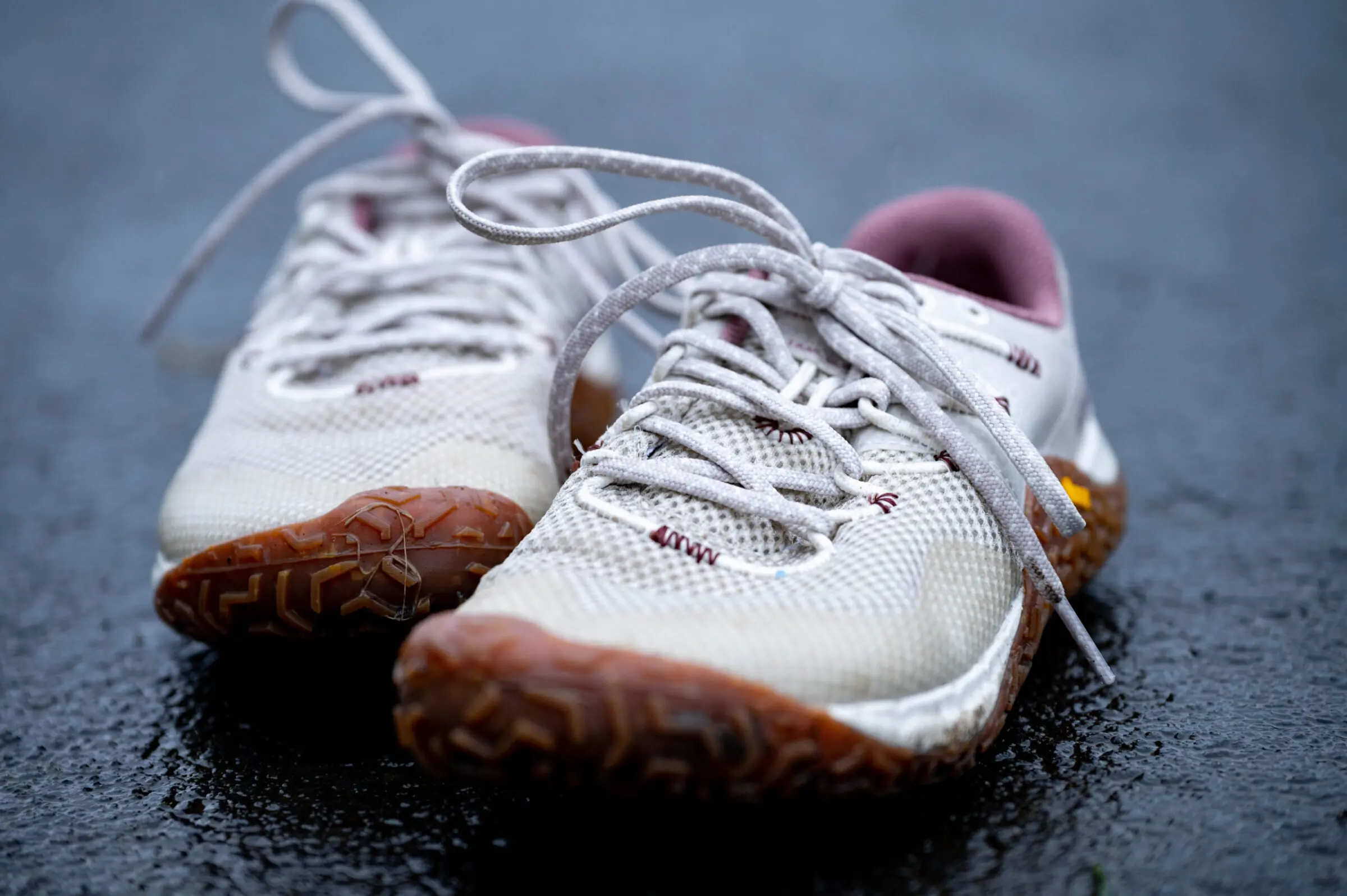



Stability
For runners, particularly those with flat feet or overpronation, shoe stability is intended to offer additional support in the midsole or arch to limit the foot from rolling inward too far. Ideal shoe support is designed to stabilize your foot and keep it in a more neutral position.
When considering the right stability for your needs, evaluate whether you require additional structure to compensate for excessive inward rolling. Also, keep in mind that many runners feel a decrease in stability when running in shoes with a greater stack height. The more material between your feet and the trail, the harder it is to feel and react to uneven surfaces, loose rocks, and slippery gravel.
Rock Plate
Some running shoes are equipped with rock plates or a built-in nylon shank. When tackling mountain slopes, these built-in structures are intended to shield the bottom of your feet from soreness and bruising. While many of the shoes on our list have rock guards, one to consider is the Brooks Cascadia 19.
Rock plates, however, are unnecessary when running on flat surfaces because they contribute extra weight. Additionally, some shoes, like the Topo Athletic Ultraventure 4, have sufficient cushioning and do not require the addition of rock plates. Women’s trail running shoes like the Nnormal Kjerag 2.0 don’t have any rock plate at all.
Flexibility
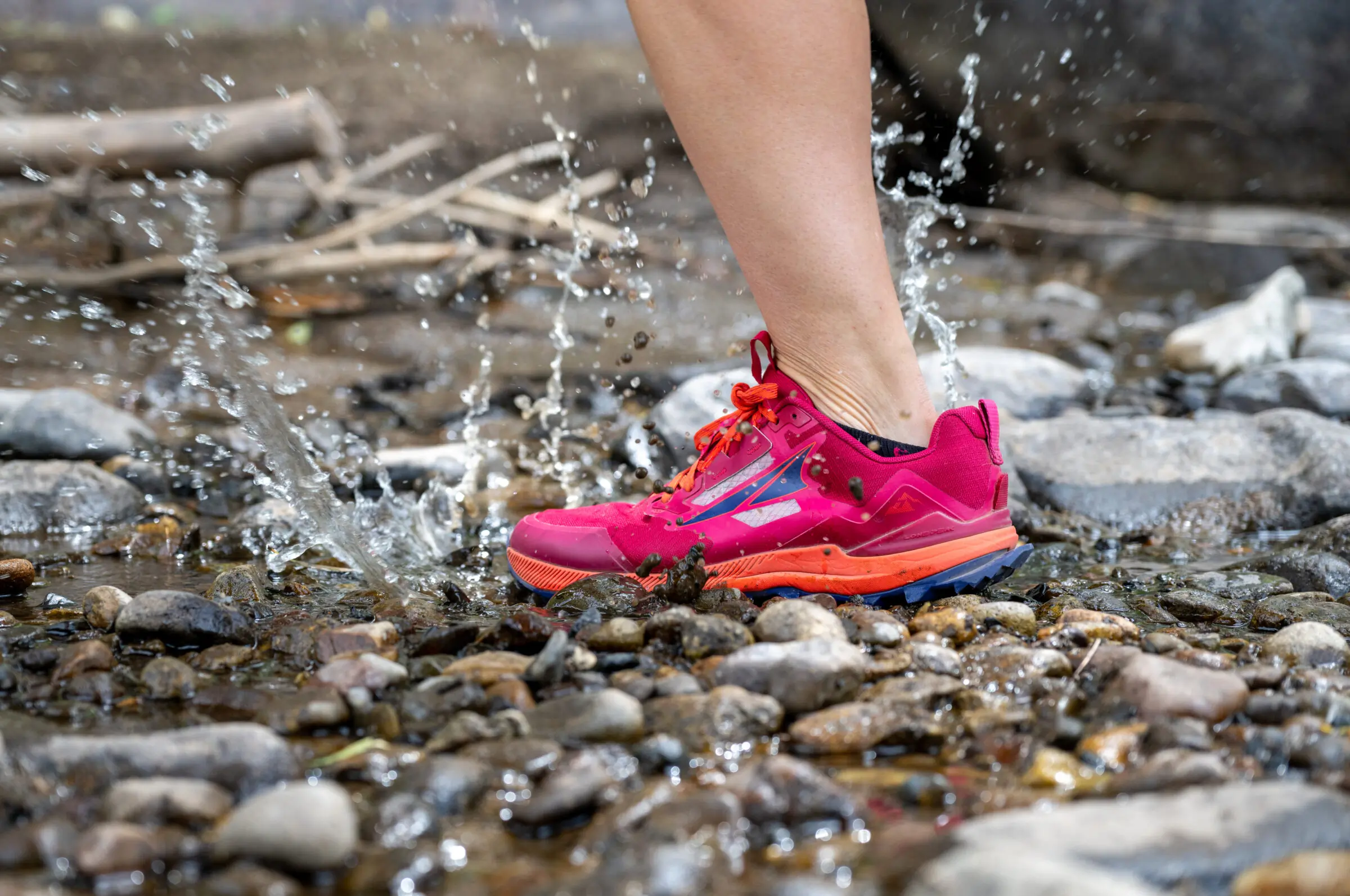



For trail running specifically, shoe flexibility is important. It helps you adjust to the terrain of the trails without injuring yourself. Ideally, the shoe will flex (or crease) near the same spot your foot flexes while pushing off. To test the flexibility of your shoe, hold the shoe with one hand on the heel and the other on the toebox.
Compress the shoe together and see where the crease happens. It should bend where the balls of your feet are. If it is hard to crease, then you have a stiffer shoe. However, the shoe should not wholly collapse on itself. You still want support and structure.
A shoe should not only flex with your natural forward gait, but it should also twist a little side to side. Again, hold your shoe from heel to toe, but twist the shoe in opposite directions this time. You should get a twist, but not so much as if you are ringing out a rag.
How much flexibility is needed is a personal preference, and a lot of it depends on your biomechanics and running style. Typically, if you are running fast, a stiffer shoe will help provide a more responsive and efficient turnover, hence why many race shoes are now carbon-plated. But a more flexible shoe will be more optimal if you are going the distance and looking for a cushion to help with muscle fatigue.
Keep notes when testing a shoe; if the flex point or the amount of flex makes you change your gait (assuming you don’t need it to change), try a different shoe. Also, something to remember when running in colder temps, the weather changes the stiffness of a shoe! So, what feels good in the summer may change when winter hits.




Breathability
One of the features we look for in running shoes is breathability. Nothing is worse than going for a run on a hot day and having your feet overheat, causing them to sweat, leading to blisters or, worse — some type of fungal/bacterial infection.
We look for shoes with uppers made from mesh or some other material that allows air and water vapor to wick out of the shoe. The porous upper material also lets cool air in. However, the trade-off is it doesn’t stop dirt and grime from entering the shoe. To get the most out of your shoes, be sure to wear appropriate socks that also wick moisture from your feet.
Waterproofing
Waterproof membranes are best when running in cold, wet, or snowy conditions. Do keep in mind that they work just as well to keep moisture out as they do to keep moisture in.
Oftentimes, we tend to avoid waterproof membranes unless running in the aforementioned circumstances for extended periods of time, because they tend to trap heat, leaving feet feeling damp, clammy, or wet, which can lead to friction blisters.
Our pick for such conditions, when we know terrain or weather necessitates water resistance, are the Brooks Caldera 7 which are rated highly in our opinion for muddy trails.




Materials
Running shoe materials can impact the shoe’s performance — including weight, breathability, water resistance, and durability. Many brands have signature styles and blends, but the base materials are similar.
Most uppers on shoes are made with synthetic mesh. Depending on how intricately constructed they are, they can offer unique features such as gaiter attachments or knit collars. The fabric blends can also create better breathability and more durability in areas that need them the most. Some shoes like Asics Trail Scout 3 are vegan-friendly. Others, like the Nnormal Kjerag 2.0 or Salomon Genesis, use Kevlar interwoven in the upper for added durability.
Below the upper is the midsole. This is where the cushion sits between the upper and the outsole. The cushion is generally made of a technical foam product. EVA foam is the most popular as it is lightweight for the amount of cushion it gives. Brands like Brooks and Salomon have their own proprietary foam blends.
If your shoe has a rock plate, it sits between the midsole and the outsole. They can be made from hard plastic or carbon fiber material.
Next is the outsole. The outsole is the bottom of the shoe that comes in contact with the trail or road. Because of its durability and traction capabilities, the outsole is almost always made from rubber. Again, each brand has its own blend and lug pattern, while many opt to use Vibram, Megagrip, a third-party rubber arguably known as the gold standard. Although lightweight running shoes are made of fewer materials and weigh less, they use more expensive materials, such as carbon, rubber, or rock plates, which are more likely to raise the price of the shoes.




Lugs and Traction
When it comes to how much grip you want, you’ll need to consider where you’ll be running and in what conditions. Outsoles with a lot of grip are great for varying terrain or deep mud, and will have aggressive-looking deep lugs that allow for more purchase on the ground without slipping.
On the other hand, if you are sticking to the pavement or compact dirt, lugs that are 5mm-7mm in height can be uncomfortable and unnecessary. Additionally, pebbles will frequently get stuck in the lugs if you run on gravel roads. As a result, shallower lugs are what you need, such as the 4 mm lugs found on the Salomon Pulsar trail running shoes.
Lug patterns also make a difference. Many shoes make it a point to have lugs that are multi-directionally patterned from heel to toe so that you can stop quicker and on a dime.




Weight
Running shoes should be lightweight while still providing adequate protection for the running style you prefer. Those looking for a pair of ultradistance running shoes shouldn’t choose anything that will make them feel weighed down.
In the running world, any shoe that weighs more than 12 ounces is generally regarded as heavy. If you want to be considered “lightweight,” you should strive for between 6.5 and 12 ounces.
At the heavier end of the spectrum sits the Saucony Xodus Ultra 4, weighing 19.8 ounces and our top pick for this guide. These beefy shoes are meant to handle rugged terrain with ease, but you shouldn’t feel too much of a weight penalty.




Price & Value
Budget
It’s no secret that running shoes keep getting pricier, and trail running shoes are no exception. Often, in the sub-$100 price range, you have to pick the features you want. More breathable shoes may not be as durable, for instance, and you probably won’t find as responsive a ride or plush feel as you’d get with pricier shoes.
However, the Asics Trail Scout 3 ($65) is a solid shoe, especially considering its price. It’s durable, if not the most breathable, and its abrasion-resistant mesh drains water well. And while it’s not the softest shoe that we tested, it has an excellent fit, and a thick, durable rubber outsole and lugs.
Mid-Tier
The $100-150 price range is where you start to find higher-end materials, soft yet supportive midsoles, and other features that you won’t get in the budget price range. The Brooks Cascadia 19 ($150) offers aggressive lugs for excellent grip in mud and the Cascadia’s signature rolling performance “rocker,” which helps you achieve a more efficient stride. The Salomon Pulsar ($140) is a different type of shoe with shallower lugs and more ground feel, making this a great choice for road-to-trail runs.
Premium
Spending $150 or more will get you more specialty shoes like the top pick, Saucony Xodus Ultra 4 ($170). This premium ride is max cushioned, breathable, peppy, and great on slick terrain thanks to the Vibram Megagrip outsole.
Other options like the Nnormal Kjerag 2.0 ($195) or the On Cloudultra 3 ($190) sit at the very highest end of this price spectrum thanks to unique or sustainable materials. Additionally, you can expect to pay more for max cushioned shoes like the Hoka Mafate 5 ($185).
Frequently Asked Questions
Women’s trail running shoes are built for off-road terrain, with deeper lugs for traction, more durable uppers to resist rocks and debris, and stability features to handle uneven ground.
By contrast, road running shoes focus on lightweight cushioning and smooth outsoles designed for pavement. Women’s-specific trail shoes also typically have a narrower heel and wider forefoot fit to match female foot shapes. If you plan to run mostly on dirt, gravel, or rocky paths, trail shoes will give you better grip, protection, and confidence than road models.
With so many options to choose from, it can be challenging to choose the right trail shoes. Here are three things to consider as you shop:
- Set realistic running goals. If you dream of running a 100-miler one day but realistically will use the shoes for 5-mile training loops around your local park, buy shoes for the latter use first.
- Consider shoe width. For folks with wide feet, or those running very long distances, a wide forefoot can be a bonus that lets toes splay. The downside is that wider shoes are less precise, can be a little more clumsy, and won’t fit well on people with narrow feet.
- Test out the tongue. Does it fit comfortably? Will it keep rocks out of your shoe?
For more help choosing, check out our complete buyer’s guide to choosing a trail running shoe.
Stack and Drop
Unless you’re running barefoot, every shoe has a stack. Measured in millimeters, the stack refers to how high the insole sits off the ground. Shoes with more cushion inherently have a higher stack. Furthermore, most shoes have a “drop” in stack height from the heel to the toe.
If you’re new to running, experts recommend a lower heel drop; it builds a wider range of motion and strength, which makes you a healthier runner.
Cushion
Stepping into a high-cushion shoe can feel like walking on a cloud. Those running longer distances (or who supinate) will prefer more cushion to damp the repetitive pounding and provide support. But it can become a penalty. Extra foam adds extra weight.
So, is more cushion better? Not always. It’s about finding the right balance between speed and comfort. If you’re aiming for a new PR, look for a light, stiffer shoe with a harder cushion and minimal lug friction.
Flexibility
Flexibility is your friend on the trails. You need variability to match the variable terrain. Trail runners will prefer a shoe with a firm outsole and less cushion but a firm toebox to push off of. Flexibility and torsion can help the foot adapt to the trail and prevent injuries.
The life of a shoe depends on a variety of factors, including running style, weight, and how often they’re used. But in general, 300 to 500 miles is a good rule of thumb.
So, if you run 10 miles per week, your shoes could last 8 months to a year. If you’re logging 20 miles per week, plan on replacing your running shoes every 4 to 6 months.
And if you see excessive wear patterns, holes, or tears — or if you notice a decrease in footbed comfort — it’s probably time to grab a new pair of sneakers.
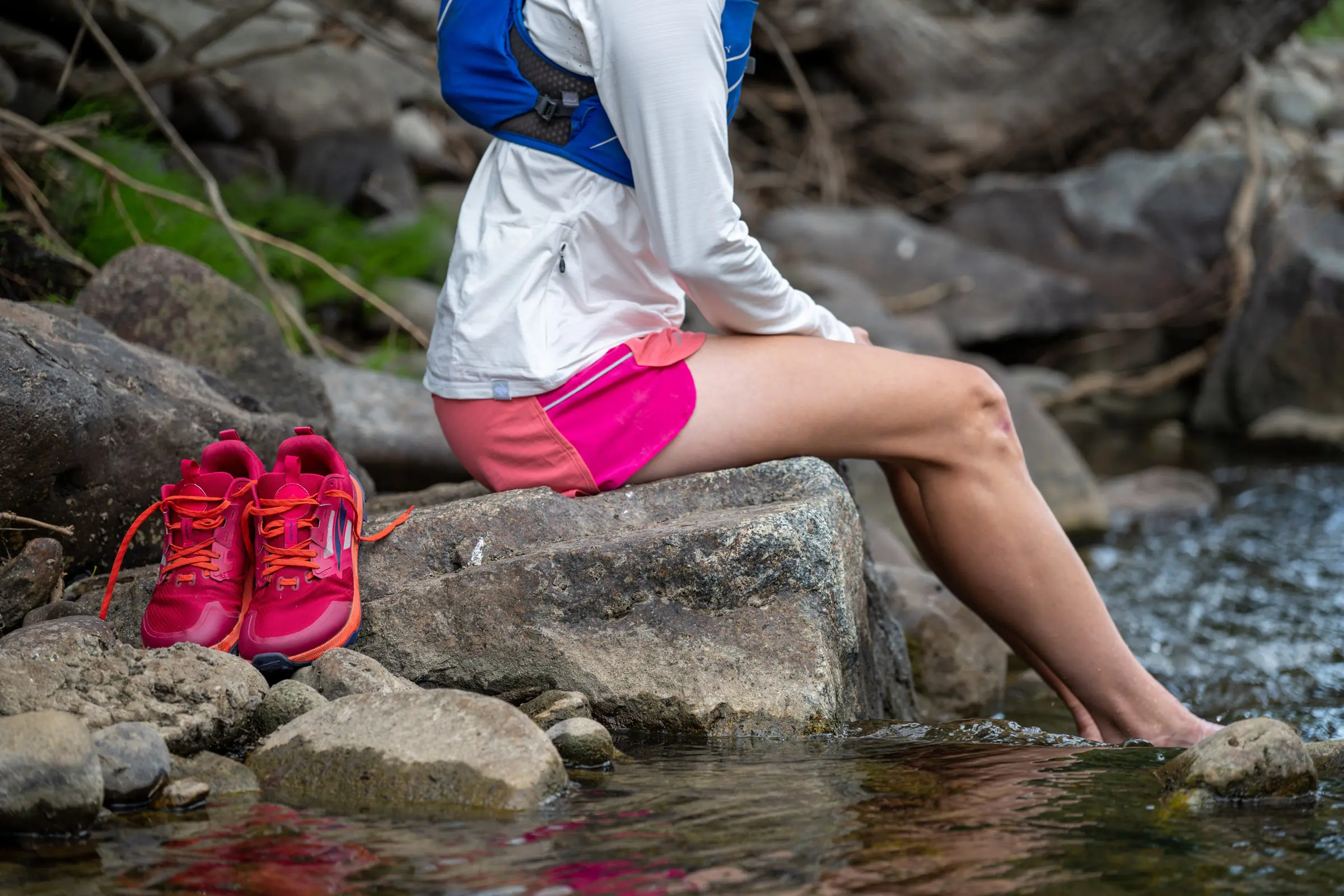



Yes, many women’s trail running shoes work well for hiking and even lightweight backpacking. They’re lighter and more breathable than boots, with good traction and cushioning for long days on the trail. A wide toe box and flexible midsole can also help reduce foot fatigue.
However, trail running shoes offer less ankle support and durability under very heavy loads. For day hikes, fastpacking, and backpacking with a lighter pack, trail running shoes are a great choice. For rugged terrain or carrying 40+ pounds, traditional hiking boots may still provide more stability and protection.


The Best Winter Running Shoes of 2025-2026
We tested the best winter running shoes of the 2025-2026 season. Check out top picks from Saucony, Salomon, Merrell, and more.
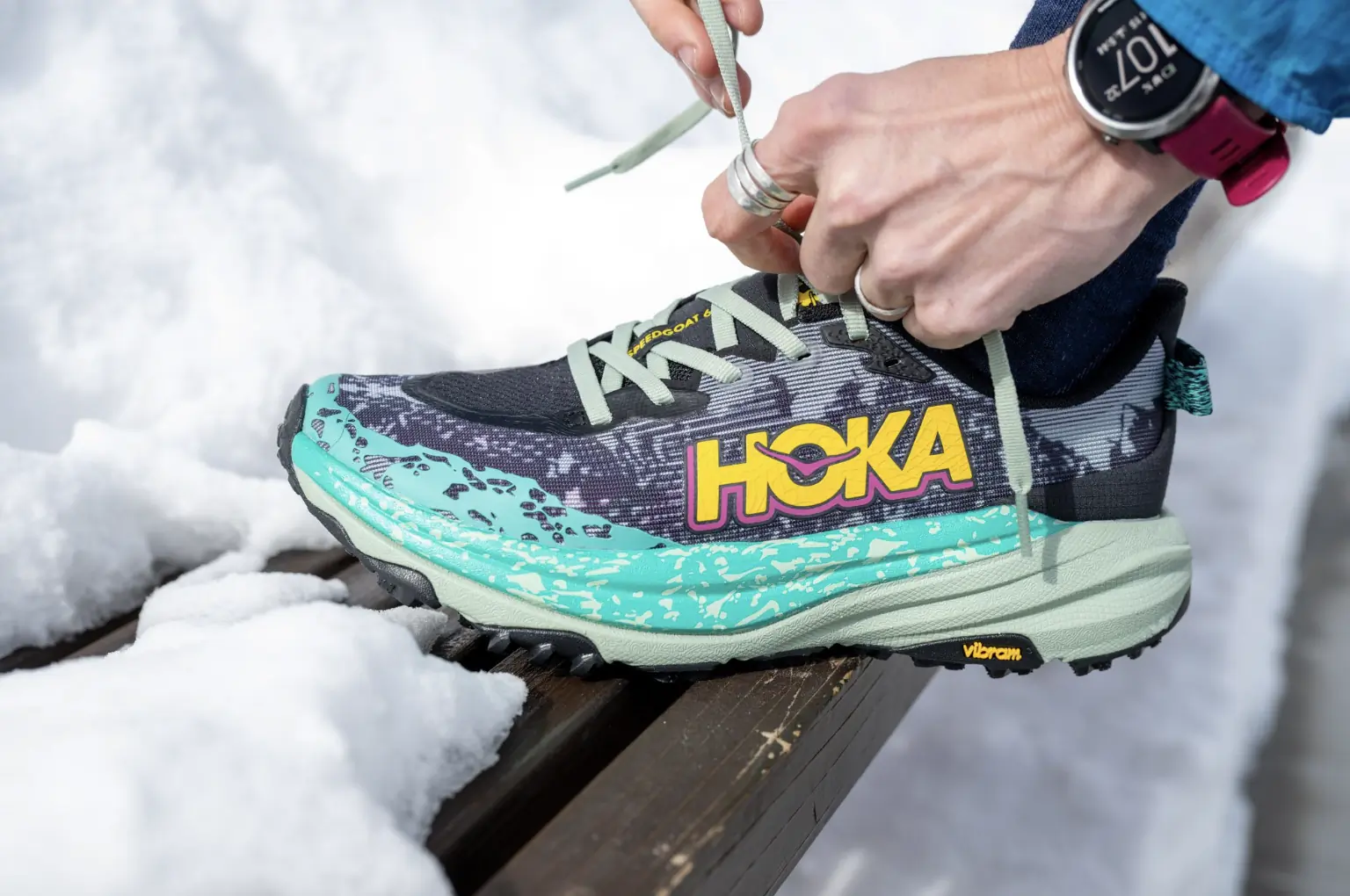

The Best Hiking Shoes of 2025
We tested and ranked the best hiking shoes for men and women for 2025, including top picks from Hoka, Salomon, Merrell, SCARPA, and more.


